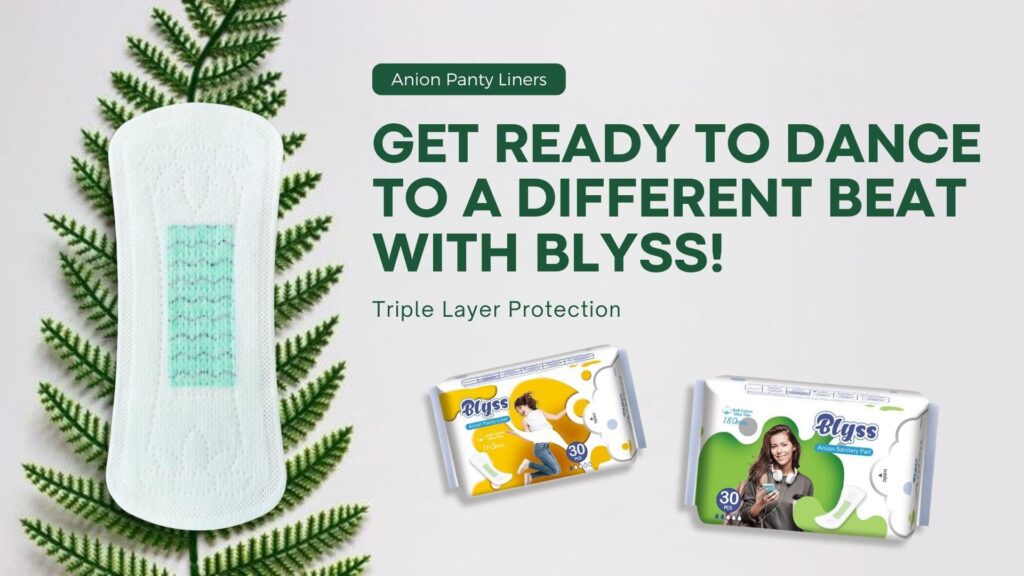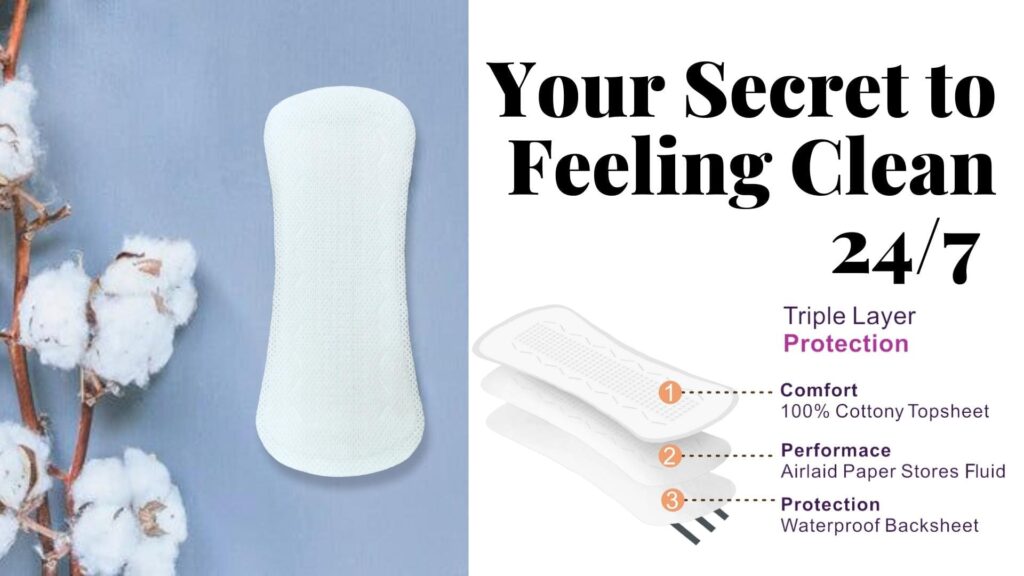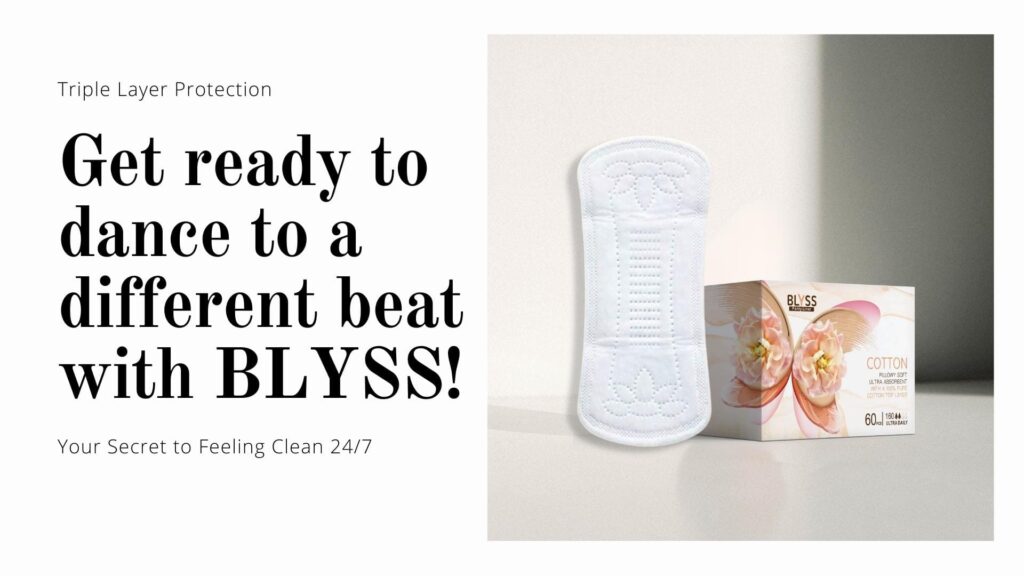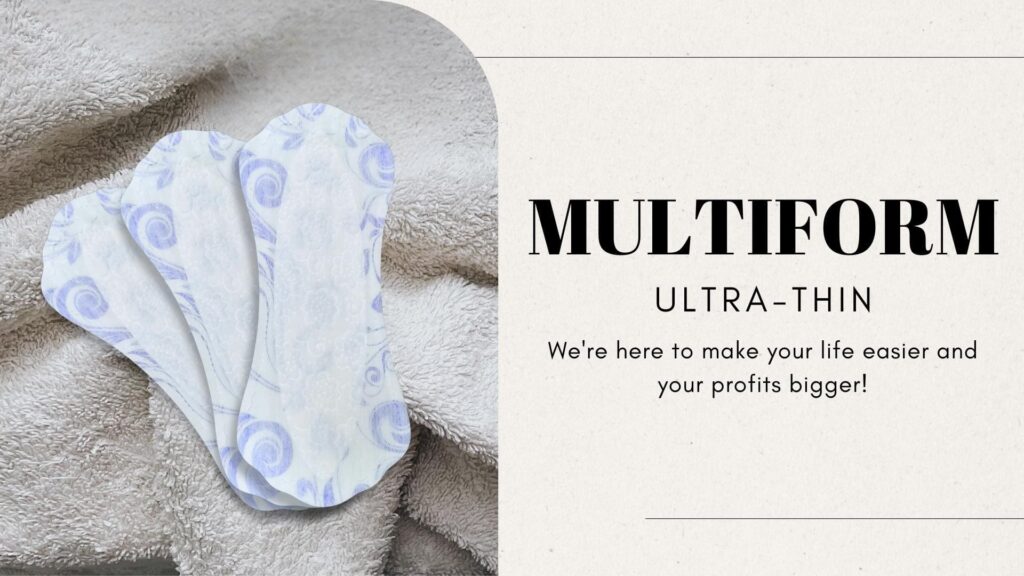Introduction
The evolution of menstrual products has come a long way, providing women with more options for menstrual comfort. One such option is panty liners, which play a crucial role in maintaining menstrual hygiene. In this article, we will delve into everything you need to know about panty liners for daily use, including how to choose the right one and addressing common concerns. We will also explore sustainable and eco-friendly alternatives for those looking to make more conscious choices. Let’s break the taboo around menstruation and embrace the comfort and convenience that panty liners wecan offer.

What are Panty Liners?
Panty liners have been around for decades, offering women a discreet and convenient solution for light menstrual flow or everyday freshness. These thin absorbent pads are designed to be worn in the underwear to provide an extra layer of protection against leaks and stains. Made from materials like cotton, rayon, or a combination of both, panty liners are softer and more flexible than traditional sanitary pads. They are specifically designed to be worn between periods or on light flow days, providing a sense of security and confidence. Panty liners are available in various sizes and styles, including 160mm, 180mm with wings and without wings, also multiform, T-shape, catering to different needs and preferences.
Benefits of Using Panty Liners for Daily Use
Panty liners offer a range of benefits that make them a popular choice for women of all ages. Firstly, they help prevent stains on clothing, ensuring that you can go about your day worry-free. Whether it’s a little spotting or unexpected discharge, panty liners provide that extra layer of protection to keep your clothes clean and fresh. Additionally, panty liners help reduce odor, keeping you feeling confident and comfortable throughout the day. They are also incredibly versatile, serving as a backup for tampons or menstrual cups on lighter days, or providing a sense of security during activities like exercise or travel.

Choosing the Right Panty Liner
When it comes to choosing the right panty liner, there are a few factors to consider. Firstly, understanding different absorbency levels is crucial. Panty liners come in various absorbencies, ranging from light to heavy. It’s important to select a liner that matches your flow and provides adequate protection without feeling bulky.
Some women prefer winged panty liners, which have flaps that fold over the sides of the underwear, providing extra coverage and preventing leakage. Non-winged panty liners, on the other hand, offer a more streamlined and discreet option. Consider your personal preferences and the level of protection you desire when choosing between winged and non-winged liners.
Another important factor is the fit of the panty liner. It should be wide enough to cover the entire area where you might experience leakage, but not so wide that it becomes uncomfortable or noticeable. The liner should adhere securely to the underwear and stay in place throughout the day. Some panty liners have adhesive backing to ensure they stay put, while others rely on the shape and contours of the liner itself.

Sustainable and Eco-friendly Alternatives
As we become more conscious of our environmental impact, many women are seeking sustainable and eco-friendly alternatives to disposable panty liners. Disposable liners contribute to the growing issue of menstrual waste, as they end up in landfills and take years to decompose.
Reusable and washable panty liners are a great alternative for those looking to reduce their environmental footprint. These liners are made from durable and absorbent materials, such as organic cotton or bamboo, and can be washed and reused multiple times. They are cost-effective in the long run and significantly reduce the amount of waste generated.
When comparing the cost of disposable versus reusable panty liners, it’s important to consider the long-term investment. While reusable liners may have a higher upfront cost, they can last for years with proper care. On the other hand, disposable liners need to be continuously repurchased, resulting in ongoing expenses.
By choosing reusable panty liners, you not only reduce waste but also contribute to a more sustainable future. It’s a small change that can make a big difference in the long.

Common Concerns and Myths Debunked
There are common concerns and myths surrounding the use of panty liners that are important to address. One concern is breathability. Some women worry that wearing panty liners for extended periods may restrict airflow and lead to discomfort or irritation. However, modern panty liners are designed with breathable materials that allow air circulation, reducing the risk of such issues. It’s still important to change your liner regularly to maintain freshness and hygiene.
Another debate revolves around the use of synthetic versus natural materials in panty liners. While some women prefer natural materials like cotton for their breathability and hypoallergenic properties, synthetic materials like rayon can also offer excellent absorbency and comfort. The choice ultimately comes down to personal preference and any sensitivities or allergies you may have.
There is a myth that wearing panty liners for prolonged periods can disrupt the natural balance of the vaginal environment or lead to infections. However, if you change your liner regularly, maintain good hygiene practices, and choose liners made from breathable materials, there is no evidence to support these claims. It’s important to listen to your body and make choices that work best for you.
Tips for Using Panty Liners
To ensure maximum comfort and effectiveness when using panty liners, here are a few tips to keep in mind:
- Proper placement: Position the panty liner in the center of your underwear, ensuring it covers the area where you may experience leakage. Smooth out any wrinkles or folds for a comfortable fit.
- Combining with other menstrual products: On heavier flow days, you can use a panty liner as a backup to a tampon or menstrual cup for added protection against leaks.
- Hygiene practices: Change your panty liner regularly, ideally every 4-6 hours or as needed. Dispose of used liners properly in a sanitary bin or wrap them in toilet paper before throwing them away.

Reviews and Recommendations
When choosing panty liners, it can be helpful to read reviews and recommendations from other users. Consider factors such as absorbency, comfort, and sustainability. Look for innovative features like biodegradable materials or organic options. User testimonials can provide valuable insights into the performance and reliability of different brands and products.
FAQs
Here are answers to some common questions that women may have about panty liners:
- Can panty liners be used during postpartum recovery? Panty liners can be useful during postpartum recovery for light bladder leakage or spotting. However, it’s important to consult with your healthcare provider to determine the best options for your specific needs.
- How to choose between scented and unscented liners? Scented panty liners may contain added fragrances that can potentially irritate sensitive skin or disrupt the natural pH balance of the vagina. It’s generally recommended to opt for unscented liners to minimize the risk of irritation or allergic reactions.
- Are there panty liners designed for workouts or active lifestyles? Yes, there are panty liners specifically designed for workouts and active lifestyles. These liners are often made with moisture-wicking materials and have enhanced adhesive to stay in place during physical activities. Look for options that offer flexibility, breathability, and reliable protection.
Conclusion
Panty liners are a versatile and convenient menstrual hygiene product that can provide comfort and confidence during light flow days or for everyday freshness. By understanding the different types of panty liners available, considering factors like absorbency and fit, and exploring sustainable alternatives, women can make informed choices that suit their needs and align with their values.
Let’s continue to break the taboo around menstruation, encourage open dialogue, and empower women to make choices that prioritize their comfort, health, and the environment. Whether you choose disposable or reusable panty liners, the goal is to find what works best for you and embrace the freedom and convenience that panty liners can offer in your menstrual journey.


